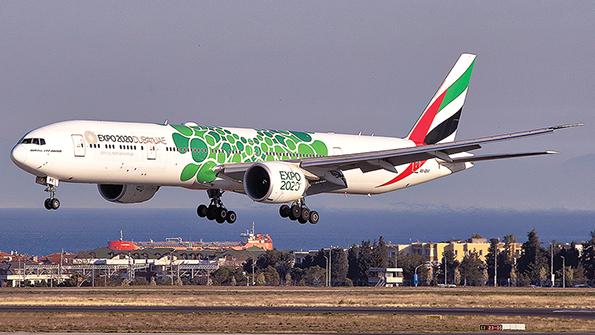
Ask anyone in the MRO business for a list of the hottest industry trends, and data-driven maintenance is sure to be near the top. Much of the emphasis is on aggregating large datasets on specific aircraft or engines from multiple operators and using it to glean insight on when disruptive events such as a failure of a specific part may happen. But increasingly airlines are reaping benefits from their own data, which can be used to customize their efforts based on unique operating environments.
Among the most ambitious of such projects is Emirates Airline’s collaboration with Boeing on the OEM’s Optimized Maintenance Program (OMP) offering to streamline its 777 maintenance. Early returns suggest it will be one of the more successful as well.
“Like everything else, there’s always a tinge of nerves about what surprises it could bring to the operation that we did not take into our calculations,” Ahmed Safa, Emirates vice president of engineering and maintenance, tells Inside MRO. “But so far, we have not had a single question mark about whether it was a good decision.”
Emirates committed to OMP in early 2018 following several years of evaluation. The first step was applying Boeing’s OMP modeling to Emirates’ fleet data and finding initial opportunities to adjust task intervals—a process that typically takes about six months, Boeing Global Services Vice President for Commercial Services Mike Fleming says.
In Emirates’ case, initial changes have been made to both A check and C check intervals. A checks are now done every 2,500 flight hours (FH) or 500 flight cycles (FC), up from 2,000 FH and 400 FC before OMP. (A separate Emirates project eliminated a calendar-day limit.) The carrier’s C check intervals were adjusted 15,000 FH or 1,125 days to 18,000 FH or 1,200 days.
Emirates began transitioning its 154-aircraft 777 fleet to the new program in early 2019, and the process is now about 40% complete, Safa says. Bridging requirements to bring aircraft from the old to the new program means transitioning the entire fleet will take about two years, but positive returns are already evident.
The airline’s deep 777 experience—it operates 10% of the global 777 fleet and has flown every variant produced—has helped keep it at the top of dispatch reliability figures, at about 99.5-99.6%, Safa says. Those marks, slightly higher than the global fleet average, are being maintained under the OMP—a clear sign that the adjusted intervals are not compromising operational efficiency.
“If it was not going to work, it would immediately have [had] an impact on our on-time performance and dispatch reliability,” Safa says. “But to continue to see the operation at 99.5%, 99.6%—it confirms that what we have put in place is delivering what we anticipated.”
The OMP complements bigger-picture optimization efforts that accompany any in-service model. The 777’s A check intervals when the model entered service in 1995 were 1,000 FH or 75 days, for instance. While fleet-level interval changes benefit all operators, tailoring programs for individual airlines requires a more concentrated dataset.
“Take a task that we do every 10 days, as the [Boeing maintenance program] prescribes,” Safa says. “Every time we do it, our findings are nil, nil, nil, whereas other operators have some positive findings. We need to be liberated from the shackles of the [portion of] industry that’s driving this threshold to a specific time frame.”
Longer maintenance intervals are only part of the story, Fleming says: “The number of scheduled maintenance delays is reduced, just by virtue of the fact that you’re not opening up the airplane as often. So you get aircraft availability increasing; you get scheduled reliability increasing, too.”
Boeing and an operator can set an OMP up in about six months, but fine-tuning it takes years. Boeing will monitor customer maintenance data for five years as part of an OMP package and provide input as needed.
“We look at the effectiveness, whether there have been any findings and whether there are any adjustments that need to be made to the program,” Fleming says. “Our team will continue to work closely with the [operator] to make sure the forecasted effectiveness that we targeted is actually achieved.”
Intervals can also be further expanded. Boeing and Emirates are evaluating whether to increase the C check time interval to 1,375 days, for instance.
Boeing has about 2,500 customer aircraft with 24 airlines under OMP programs, including several with multiple fleet types.
“No two customers are exactly alike or operate in the same environments,” Fleming says. “That combination of data-sharing with our software applications and algorithms can create customized programs that continue to conform to regulatory requirementsbut have the elasticity to be uniquely suitable for a customer’s needs.”



